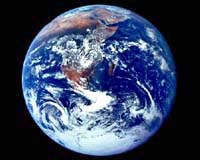CHANNELS SERVICES | 
The Kyoto protocol on greenhouse gas emissions was signed in 1997 as a statement of aims and methods for fighting global warming and now needs only Russian ratification to come into force. An offshoot of the 1992 UN Framework Convention on Climate Change (UNFCCC), it is the most important of approximately 220 international agreements drawn up to protect the environment. It commits industrialised countries to bringing their emissions of six greenhouse gases, the principal of which is carbon dioxide (CO2), back below 1990 levels by 2008 to 2012. Forty industrialised countries have agreed to specific targets for cuts, which should on average bring their greenhouse gas emissions to 5.2 percent below their 1990 levels. For the 39 countries concerned it will entail a reduction in the use of fossil fuels, bringing about substantial changes in the world economy and in people's way of life. Different reduction targets have been set for the various countries involved: seven percent for the United States, six percent for Japan, zero percent for Russia and eight percent for the European Union. Within Europe, targets vary from a 21 percent reduction for Germany to a 15 percent increase for Spain, with France remaining at zero percent. Following the 1991 refusal by the United States to ratify the protocol, the overall reduction in emissions is unlikely to exceed two percent, well below the initial target of 5.2 percent, according to the International Energy Agency. Russian ratification is needed to meet the requirement that 55 percent of industrial polluters, as measured by 1990 carbon dioxide emissions, be signed up. Russia accounts for 17.4 percent of CO2 emissions, and the countries currently signed up account for 44.2 percent. Passed by 159 countries at Kyoto, Japan, on December 12, 1997, the protocol has now been ratified by 117 countries. The United States was initially a signatory, but President George W. Bush said in March 2001 that the protocol would place too heavy a burden on the US economy. He also said it was "unfair" that large developing countries should not be involved in the reductions. Developing countries, who are the least to blame for global warming and have most to fear, have not been allocated specific cuts. Instead, they will be offered technical help and funds to avoid going down the same carbon-pollution path and to adapt to looming climate change. Unlike the 1992 UN framework agreement on climate that Washington ratified and that came into force in 1994, urging signatories to stabilise their emissions of greenhouse gases in 2000 at 1990 levels, the Kyoto protocol will be legally binding. Further negotiations are scheduled for 2005 to pursue efforts to reduce emissions after the 2008-2012 timeframe. Extensions of the protocol, each lasting five years, are envisaged after 2012, when progressively deeper cuts are likely. Scientists have warned that carbon gas emissions into the atmosphere create a "greenhouse" effect, leading to a gradual warming of the climate estimated at 0.4 and 0.8 degrees Centigrade (0.7-1.4 degrees Fahrenheit) since 1860, with possibly disastrous consequences for the environment. All rights reserved. Copyright 2003 Agence France-Presse. Sections of the information displayed on this page (dispatches, photographs, logos) are protected by intellectual property rights owned by Agence France-Presse. As a consequence, you may not copy, reproduce, modify, transmit, publish, display or in any way commercially exploit any of the content of this section without the prior written consent of Agence France-Presse. Quick Links |
|
| The contents herein, unless otherwise known to be public domain, are Copyright 1995-2003 - TerraDaily. AFP Wire Stories are copyright Agence France-Presse ESA Portal Reports are copyright European Space Agency. Additional copyrights may apply in whole or part to other bona fide parties. Advertising does not imply endorsement, agreement or approval of any opinions, statements or information provided by SpaceDaily on any web page published or hosted by SpaceDaily. Privacy Statement |
